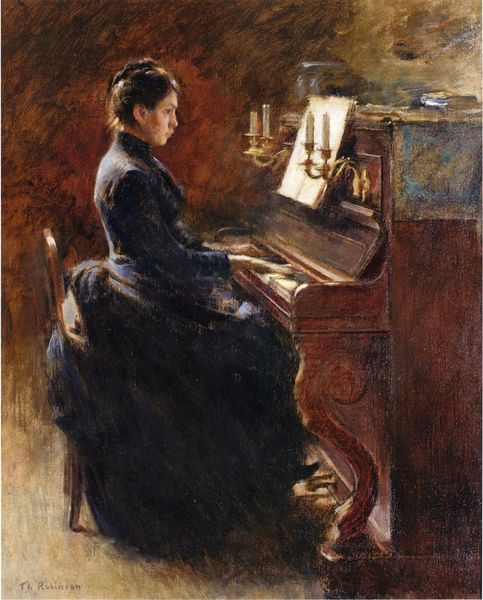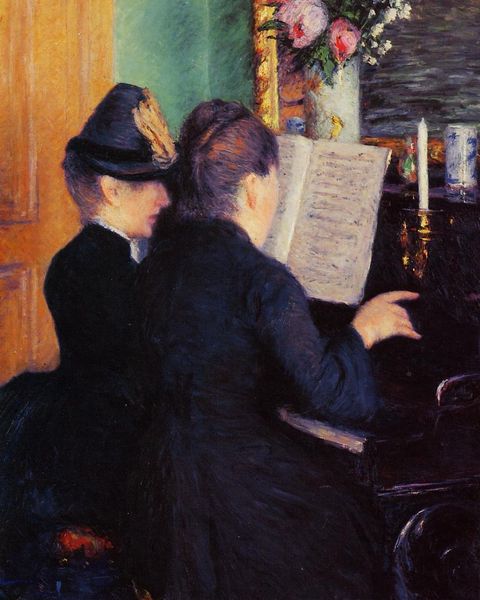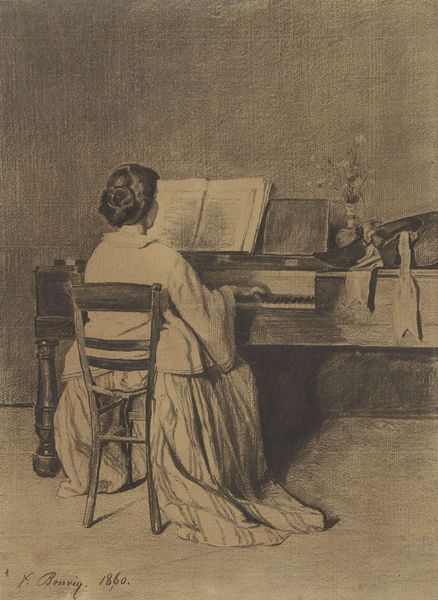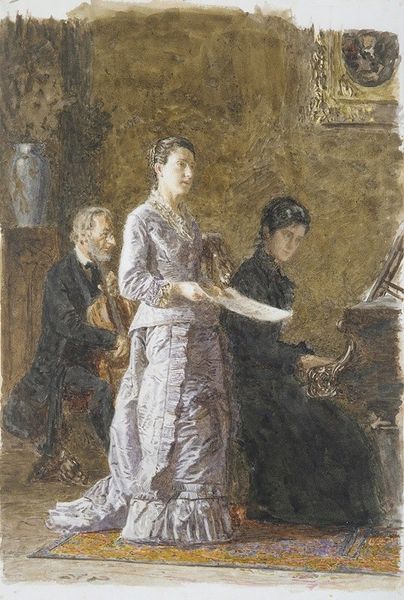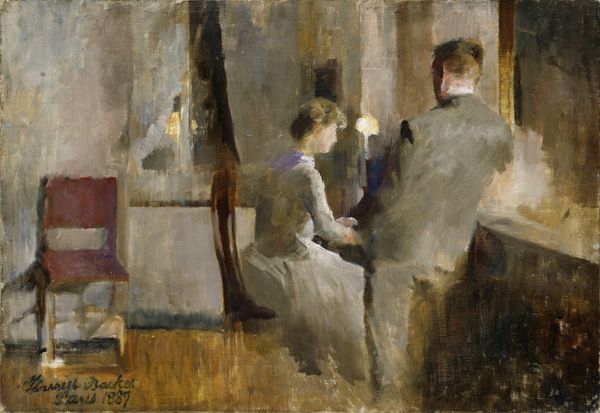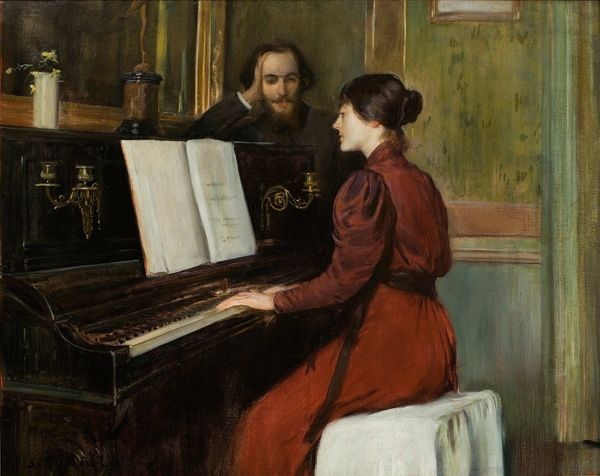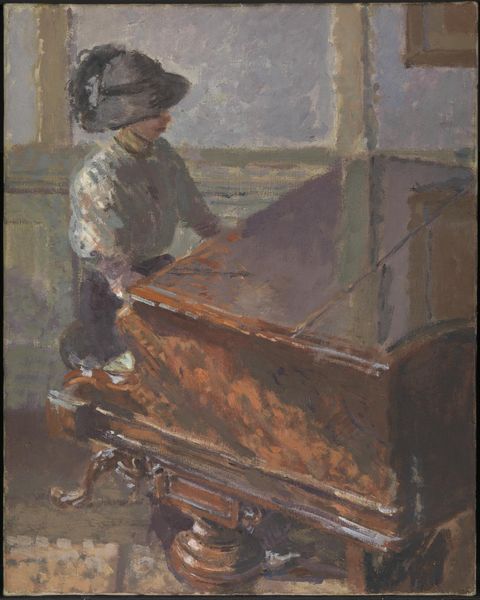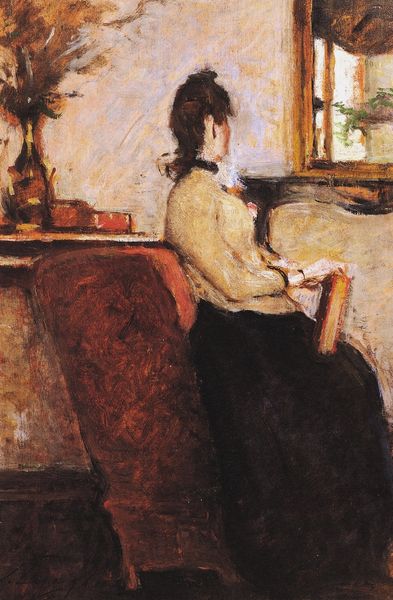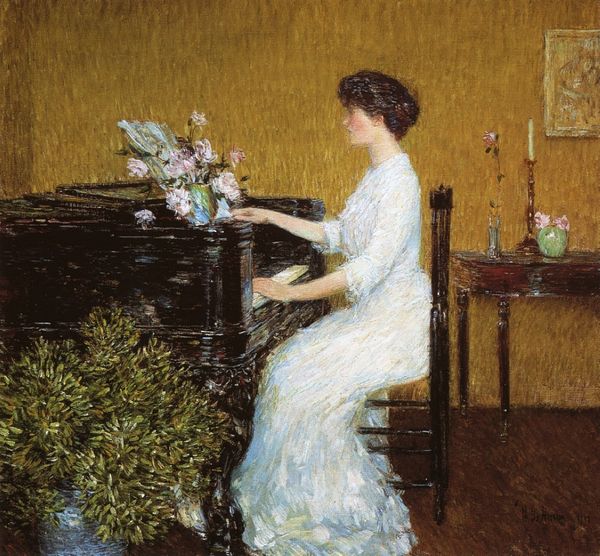
painting, oil-paint
#
portrait
#
impressionist
#
painting
#
impressionism
#
oil-paint
#
oil painting
#
group-portraits
#
genre-painting
#
expressionist
Copyright: Public domain
Curator: We’re now viewing James Ensor’s "Russian Music," painted in 1881. Editor: It has such a somber tone. The composition feels like a very traditional, academic study of light, and the subject matter looks intimate yet distant. Curator: Indeed. It's insightful to view this work within the social and artistic circles of the time. Ensor, a Belgian artist, seems to be engaging here with both his immediate world and the broader artistic trends of the late 19th century. It offers commentary on domestic life, artistic collaboration, and class dynamics through the quiet tension within the depicted scene. Editor: From a formal perspective, the composition directs the viewer's gaze from the woman at the piano, who is the point of diffusion in the play of light, toward the man listening. I find that Ensor really captures the tactile qualities of the objects. Curator: What’s fascinating is that it seems as if Ensor sets up gendered power dynamics, with the woman relegated to domestic artistry, and the man positioned as the arbiter or appreciator. It invites us to consider questions about cultural identity and the artist’s relationship with his Russian influences. It also provokes reflections on whether these were posed models for Ensor, their connection, their story. Editor: I agree, the piece engages with social themes. The artist's technique employs visible brushstrokes, layering browns, grays, and highlights, and adds texture that allude to emotional complexity. The way that color reflects within the mirror also suggests a subtle dialogue with the historical canon of portraiture. Curator: Absolutely. This could be read as Ensor grappling with issues like the role of women in artistic production and reception. Looking closely, it really speaks volumes. Editor: Seeing the interaction between texture, tone, and form gives it an unexpected energy. I would almost dare to describe this piece as understated expressionist rather than straightforward impressionism. Curator: So you’re seeing something beyond what meets the eye at first glance? It really does reward closer viewing. Editor: Exactly. Ensor gives us much to contemplate on aesthetic and emotional levels. Curator: It certainly contextualizes Ensor's contribution to modernism through his keen awareness of the societal discourses shaping art. Editor: And his use of oil-paint to capture both external realism and the psychological depths of human experience is masterful.
Comments
No comments
Be the first to comment and join the conversation on the ultimate creative platform.

